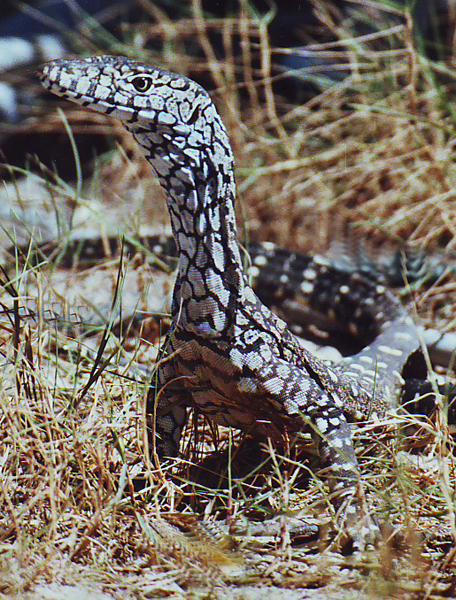|
| 질의: description | 결과: 8894번째/10150 | |
perentie (perente) (Varanus giganteus)
| 제목: | perentie (perente) (Varanus giganteus)
| | 올린이: | Wiki Photos (---@---.---)
| |

| 해상도: 456x600
파일크기: 511074 Bytes
촬영일: 2008:12:19 21:19:16
사진기: CanoScan LiDE 25 (Canon)
등록시간: 2017:01:29 20:43:53
|
Description
English: In typical tripodding pose, this large perentie (varanus giganteus) was photographed by User:Richahel in the wild near 17-Mile Quobba Station, on the coast about 100m from Canarvon, West Australia. Camera used was a Pentax KM with 70-210 Pentax lens and 400 ASA film. This is a scan from a 6x4 colour print. It is released into the public domain by the author, User:Richahel
Date 1 January 2009 (original upload date)
Author Kaiwhakahaere at English Wikipedia https://en.wikipedia.org/wiki/User:Kaiwhakahaere
Source: https://en.wikipedia.org/wiki/File:Pirentie_tripodding.JPG
The perentie (or perente) (Varanus giganteus) is the largest monitor lizard or goanna native to Australia, and the fourth-largest living lizard on earth, after the Komodo dragon, Asian water monitor, and the crocodile monitor. Found west of the Great Dividing Range in the arid areas of Australia, they are not a common sight because of their shyness and the remoteness of much of their range from human habitation. Their status in many Aboriginal cultures is evident in the totemic relationships, and part of the Ngiṉṯaka dreaming, as well as bush tucker. They were a favoured food item among desert Aboriginal tribes, and the fat was used for medicinal and ceremonial purposes. Order: Squamata, Suborder: Lacertilia, Family: Varanidae.
|
댓글 |
|---|
| | 손님 |
|
Scientific Name: Varanus giganteus (Gray, 1845)
Common Names: Perentie, Perente
Synonyms:
Hydrosaurus giganteus Gray, 1845
Titanzius giganteus Wells & Wellington, 1985
Varanus (Varanus) giganteus Mertens, 1942å |
^o^
동물그림창고 똑똑전화 누리집
^o^
|
|
|

